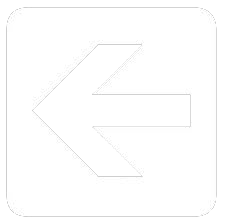|
 Previous part (Digital switching) Previous part (Digital switching)
Packet switching voice (Voice over IP) |
 |
 When was it in use? When was it in use?
1990s-Present day |
Most of the worlds telephone system has been digital now for well over 20 years. The first use of digital switching for live telephone traffic was in 1968 with a prototype exchange called Empress in London. Production digital systems were developed throughout the 1970s, the most widespread of which is Ericssons AXE system on which most of the worlds mobile phone networks are based.
The digital systems we have looked at so far use a technique called circuit switching. This means that a dedicated end to end path (a circuit) is set up for each call and that call has exclusive use of that circuit all of the time. Statistics have shown however that most calls consist of more silence than sound, hence a lot of capacity in the network is wasted transmitting loads of zeros! Circuit switching is very good at providing high quality sound transmission but for most calls we can sacrifice some of the quality in the name of efficiency.
We've also seen that for data transmission digital circuit switching limits us to 64kbits per second - hardly suitable for modern internet browsing - and the only way to get faster speed is to use several circuits in parallel. ISDN does this - 30 simultaneous calls gives you 2Mbits/s of speed but its not very practical!
As is explained in more detail on the Packet Switching section of the eMuseum computer data networks such as the internet use packet switching as a means of transporting high speed data very efficiently. It means that one circuit between two points can carry data from many different users regardless of the amount of data or speed that each user needs.
With voice traffic already in digital form it too can be placed in a packet and sent over a packet switched network. A server called a softswitch is used to interpret the phone numbers and instruct the Media Gateway where to send the packets.
The Media Gateways job is to put the digital bits representing the voice into packets and send them onto the packet switched network (and do the reverse for packets arriving in the opposite direction). A Media Gateway may be situated in a telephone exchange building handling multiple lines or it can be incorporated into the phone itself. The phone could even be software running on a PC such as Skype. When the packet switched network is based on the Internet Protocol (IP) it is called Voice over IP (VoIP). This does not always mean phone calls over the Internet though - the IP network may be a private network such as one operated by a phone company or inside an office building.
Open standard protocols defined by The International Telecommunications Union (ITU) and Internet Engineering Task Force (IETF) allow software and hardware from different providers to inter-operate. These include SIP (The Session Initiation Protocol defined by the IETF), H323 (an older alternative from the ITU) and MGCP (The Media Gateway Control Protocol).
Softswitches may consist of software running on standard PC server type hardware or (in the case of public phone networks) specialist server hardware evolved from the common control systems of digital circuit switch exchanges, and thus designed for very high reliability.
|
